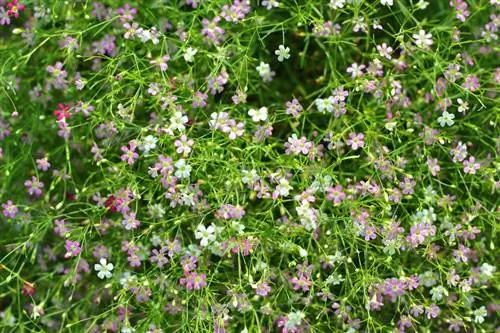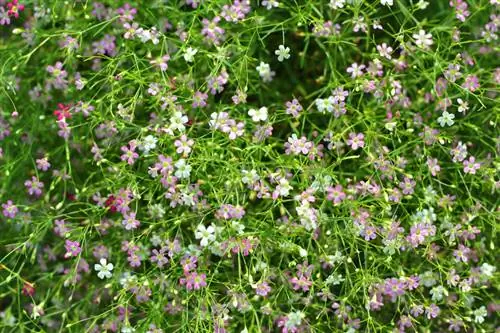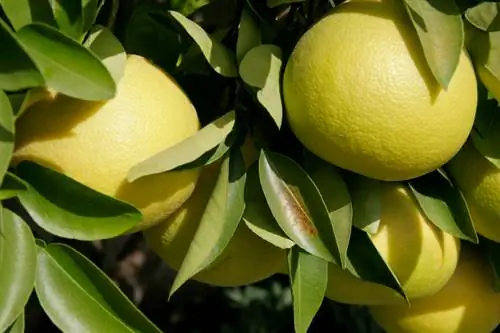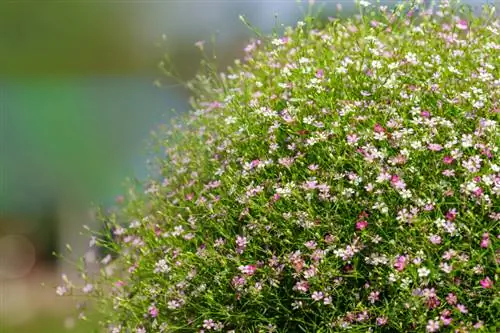- Author admin [email protected].
- Public 2023-12-16 16:46.
- Last modified 2025-01-23 11:20.
Gypsophila paniculata, the Latin name for gypsophila, is very decorative and easy to care for. Hardly any plant needs to be watered less and is so often tied into bouquets. It decorates cottage gardens, rose beds, rock gardens and dry stone walls alike.

How do you care for gypsophila?
Gypsophila care is simple: do not water, do not fertilize, avoid waterlogging. The plant is hardy, not very susceptible to disease, and is perfect for bouquets. Cut it at the right time to encourage a second bloom.
How much water does baby's breath need?
Gypsophila would like to have dry feet. So it doesn't need much water. On the contrary: water it too much and it will bloom less or not at all. It's better to avoid watering altogether. The same also applies to fertilizer. Only give your gypsophila a little water if it is very dry for a long period of time.
Gypsophila in winter
Since perennial gypsophila is hardy, it only needs winter protection in the pot. However, too much water can be a problem in wet fall or winter. If it rains heavily, treat your gypsophila to rain protection and ensure good water drainage.
Typical diseases of gypsophila
Gypsophila is very easy to care for in the right location and is hardly susceptible to diseases and pests. Young plants or seedlings occasionally suffer from stem rot, and adult plants from root rot. The reason for both diseases is usually soil that is too wet. In spring, snails like to eat the young shoots and thereby destroy the entire plant. Rabbits sometimes cause similar damage in winter.
The use of gypsophila
Gypsophila is rarely used today as a medicinal herb, for example for an expectorant or dehydrating tea. It is hard to imagine beautiful bouquets without it. It impresses with its elegant simplicity and is even used for tying brewing bouquets.
Drying gypsophila
Gypsophila still looks very natural even after drying. Maybe that's why it's so popular for dry bouquets. To dry, hang it with the flowers facing down in a shady but airy place.
The most important things in brief:
- do not water
- do not fertilize
- Avoid waterlogging at all costs
- less susceptible to illness
- ideal for drying
- perfect for flower and bridal bouquets
Tips & Tricks
Cut your baby's breath at the ideal time and you will be rewarded with a second flowering.






